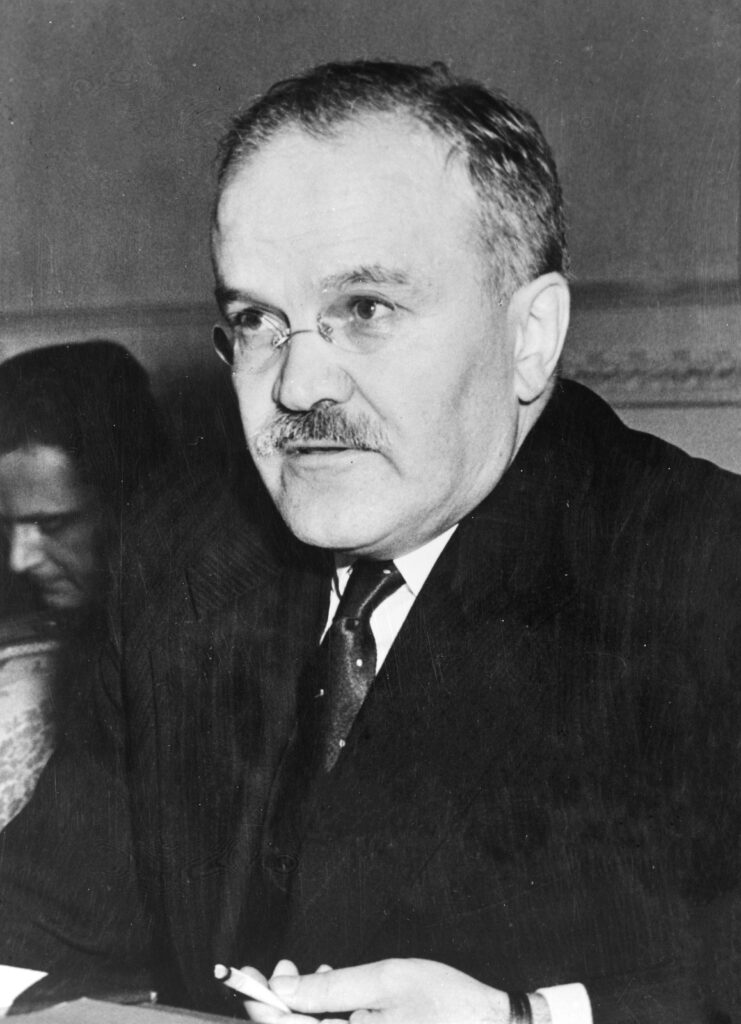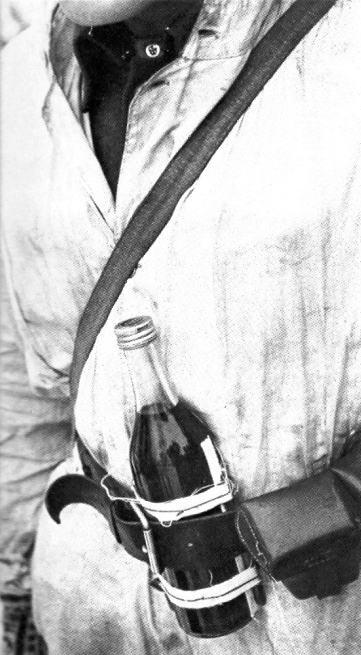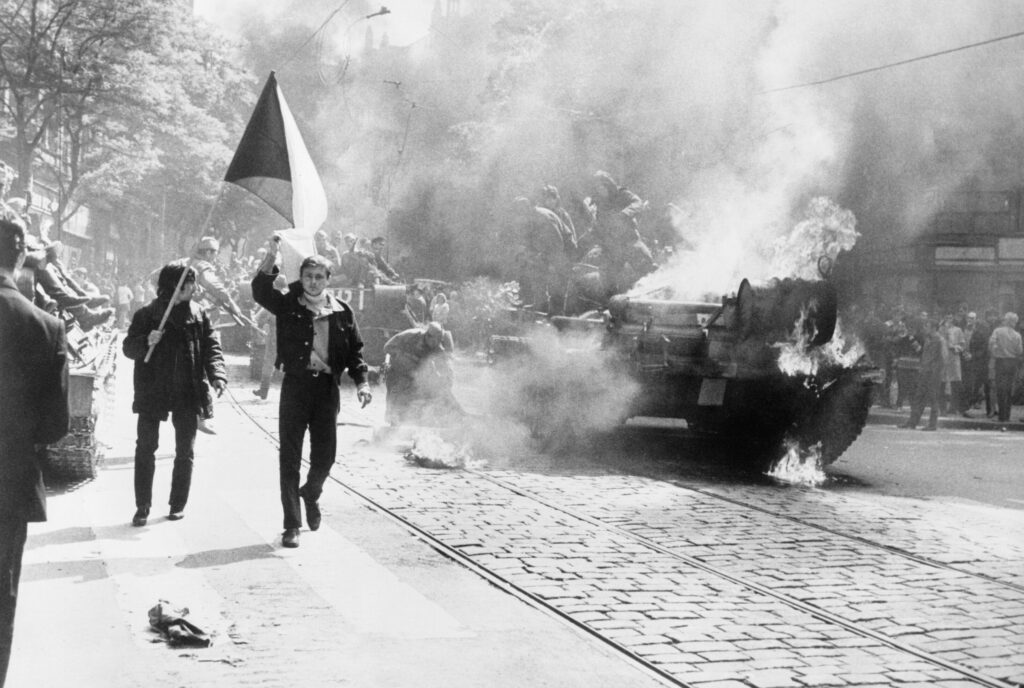The term “Molotov cocktail” came from the Russian invasion of Finland in 1939. Finnish soldiers and civilians resisted the numerically far bigger, communist Red Army with home made fire grenades named after Soviet foreign minister Vyacheslav Molotov, Molotovin koktaili.
The term’s origin was a response to Russian propaganda. Molotov was claiming on Soviet state radio that bombing missions over Finland were actually airborne humanitarian food deliveries for their starving neighbors. This was, of course, a blatant lie.

The outraged Finnish population sarcastically dubbed the Soviet cluster bombs “Molotov bread baskets” in reference to Molotov’s propaganda broadcasts. And when they began using hand-held bottle firebombs to destroy Soviet tanks, they called them “a drink to go with his food parcels”.
When skillfully thrown against vulnerable points on vehicles (such as trucks, armored personnel carriers or tanks), the little fire grenades were surprisingly successful at the time. So successful indeed that the Finns commissioned the distillery company Oy Alkoholiliike Ab to manufacture Molotov cocktails industrially. It is said that the company made 450,000 of them.

Finland’s fierce resistance and the fighting spirit of its population succeeded in preserving the country’s independence. But it came at a cost of at least 70,000 Finnish lives and large territories, which were ceded to the Soviet Union during the peace negotiations.
Since then, the Molotov cocktail has been a weapon of choice in many conflicts involving civilians against an overwhelming force. For instance, during the Hungarian uprising against Soviet control in 1956, Molotov cocktails thrown by Hungarian street fighters destroyed as many as 400 tanks before the Soviet military crushed the rebellion. Similar fighting occurred in 1968, during the Prague Spring in Czechoslovakia.

In essence, a Molotov cocktail is a primitive incendiary weapon. It consists of a breakable glass bottle filled with a flammable liquid. A fuse of some sort is attached to the outside and lit before throwing the bottle, which shatters upon impact and spreads the flammable liquid. Various kinds of liquids, fuses and added chemicals have been used, and there are some versions that produce the ignition by a chemical reaction rather than by manually lighting a fuse.
How effective these devices still are against modern military vehicles is highly questionable. Over time, military vehicles have been hardened against this sort of attack. Vulnerable points (such as tires, the cogs on which tank tracks run, air intakes and radiators) have been improved, and there are often fire suppression systems on board. And an effective counter tactic is for convoys to move very rapidly. At the same time, the delivery of a Molotov cocktail (usually by direct throwing from very close range, or by dropping from buildings, bridges or other structures) subjects the combatant to great risk. As in any form of combat, the risk-benefit assessment is very tricky and comes down to probabilities.
